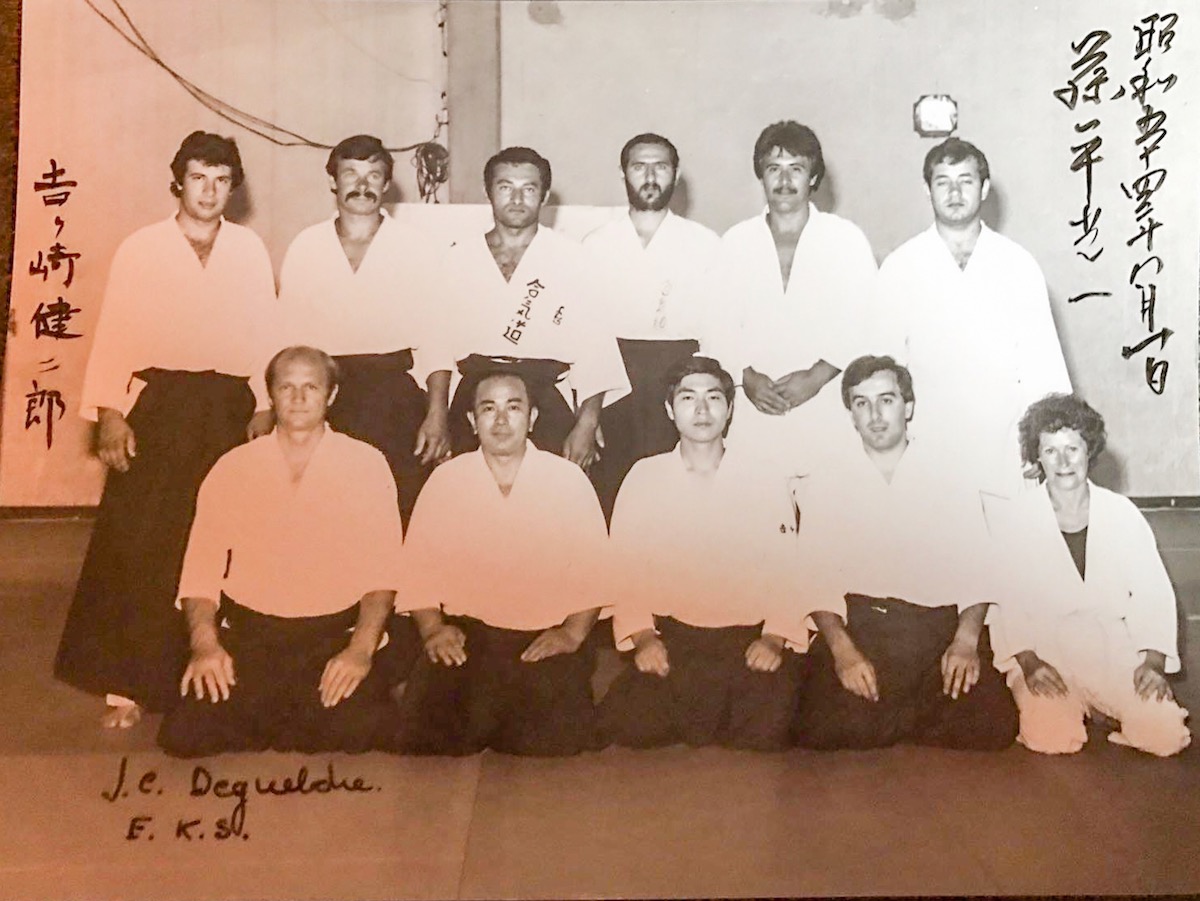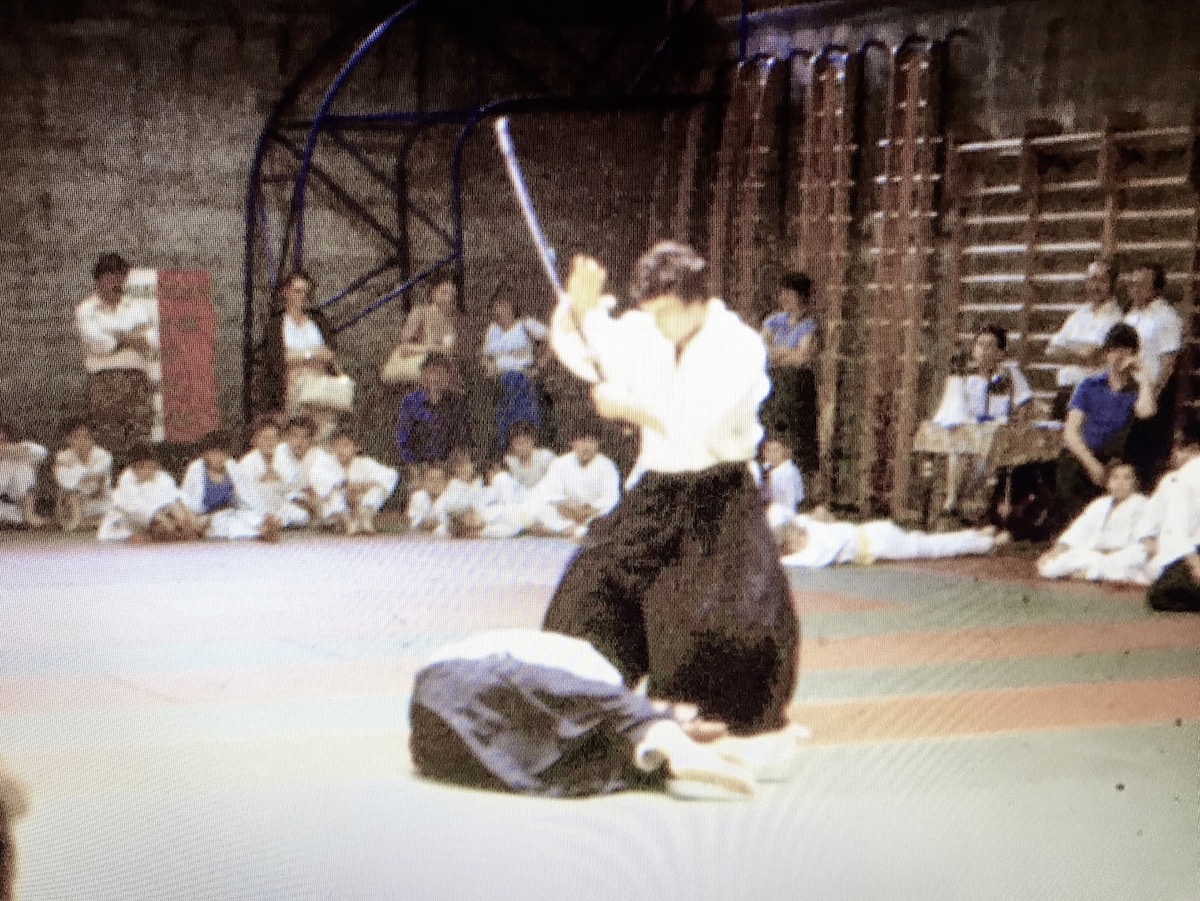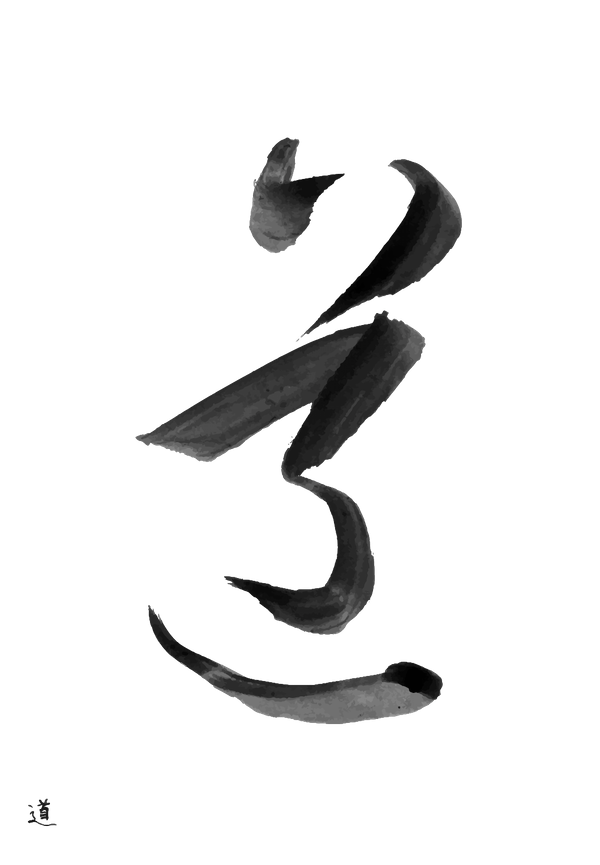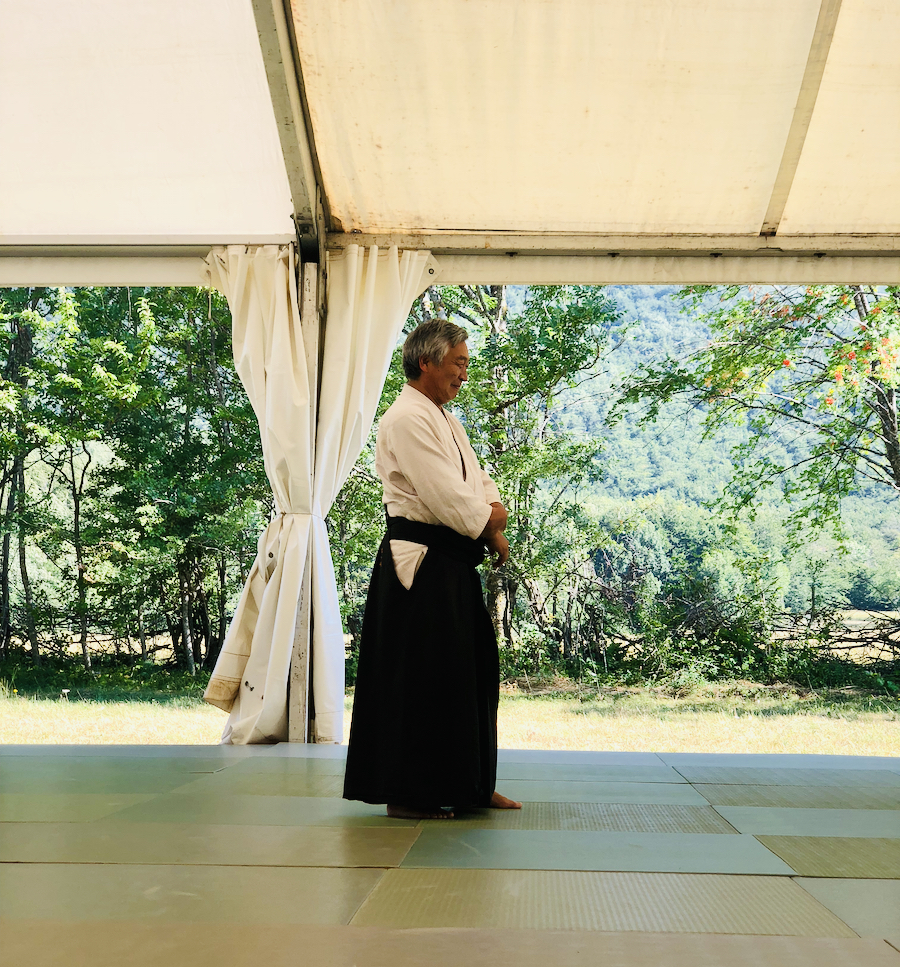
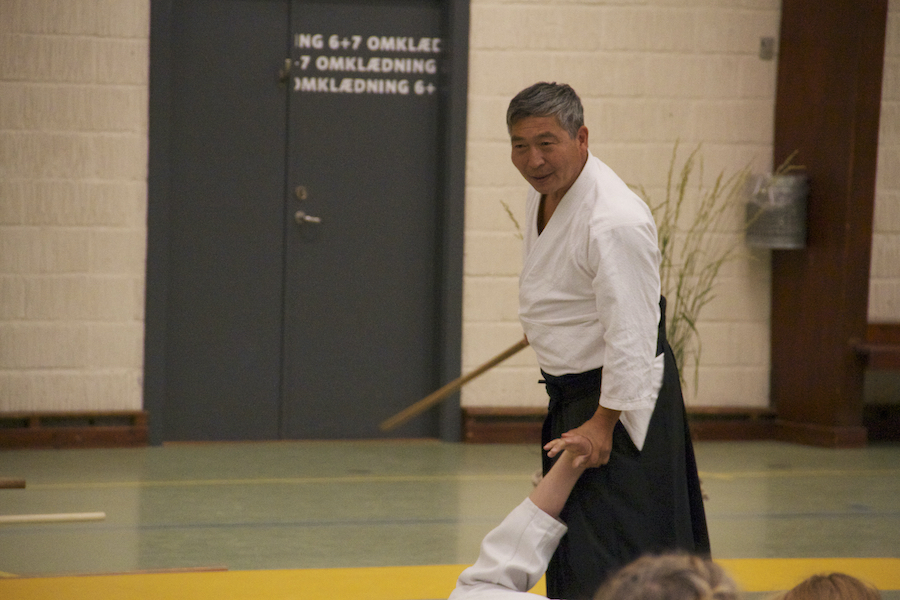
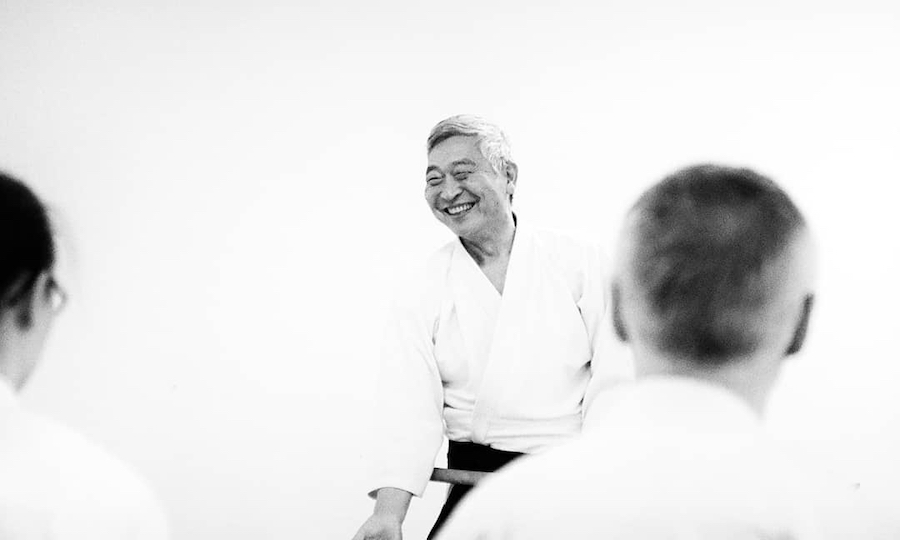
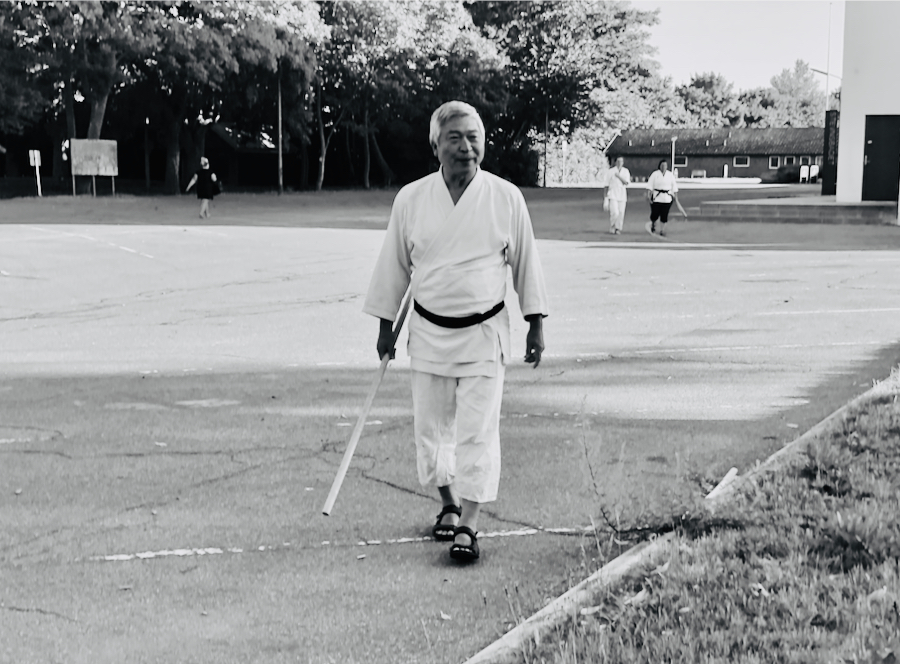
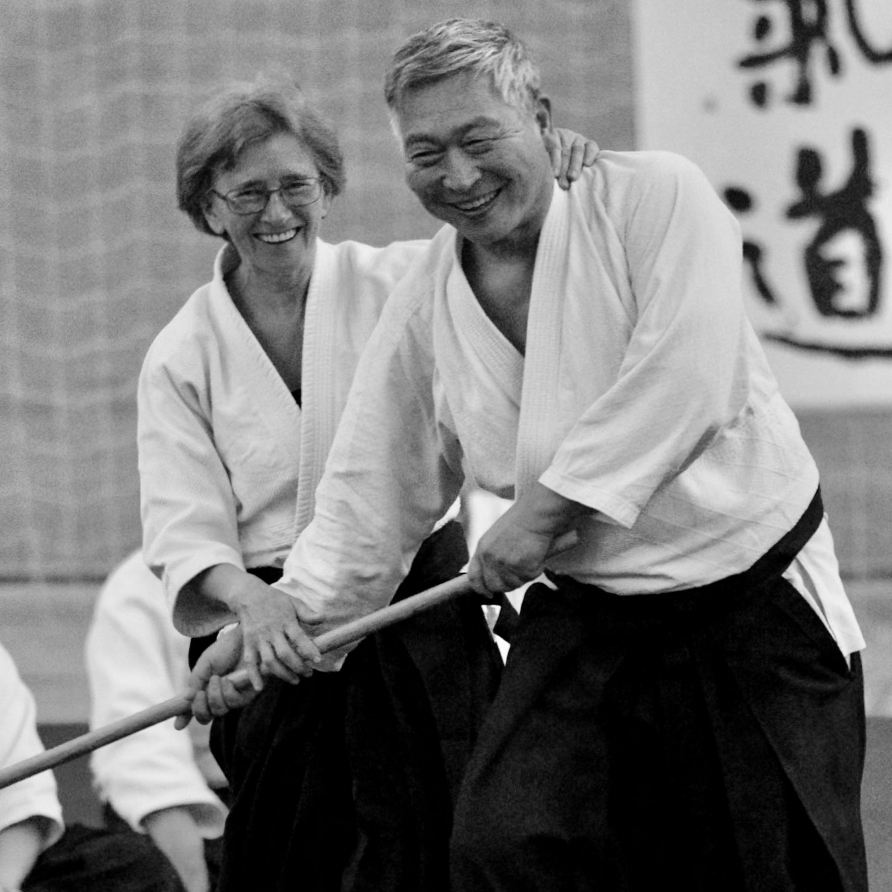
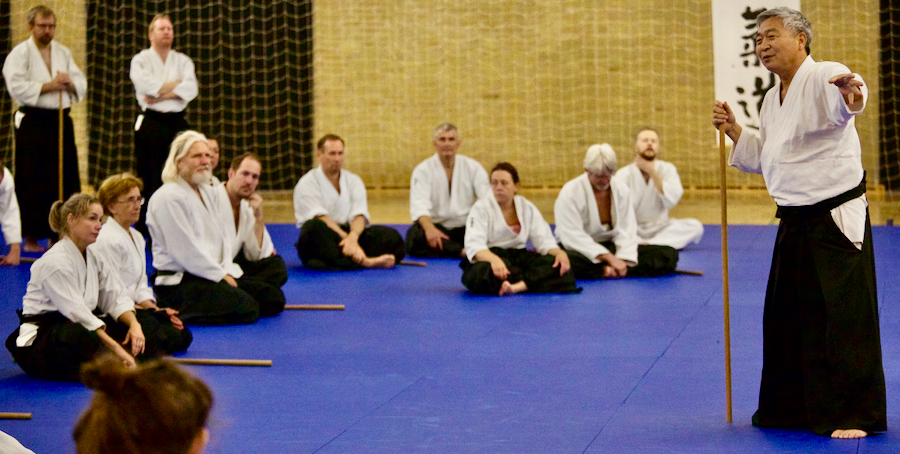
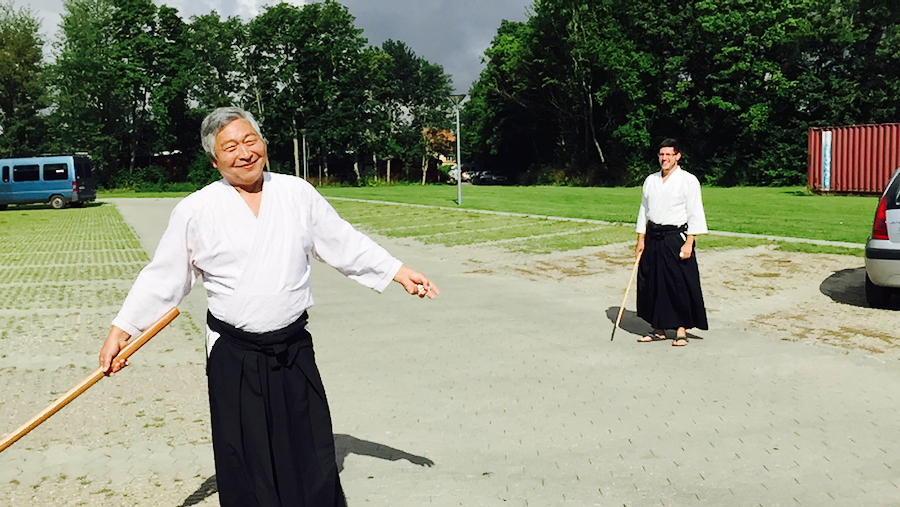
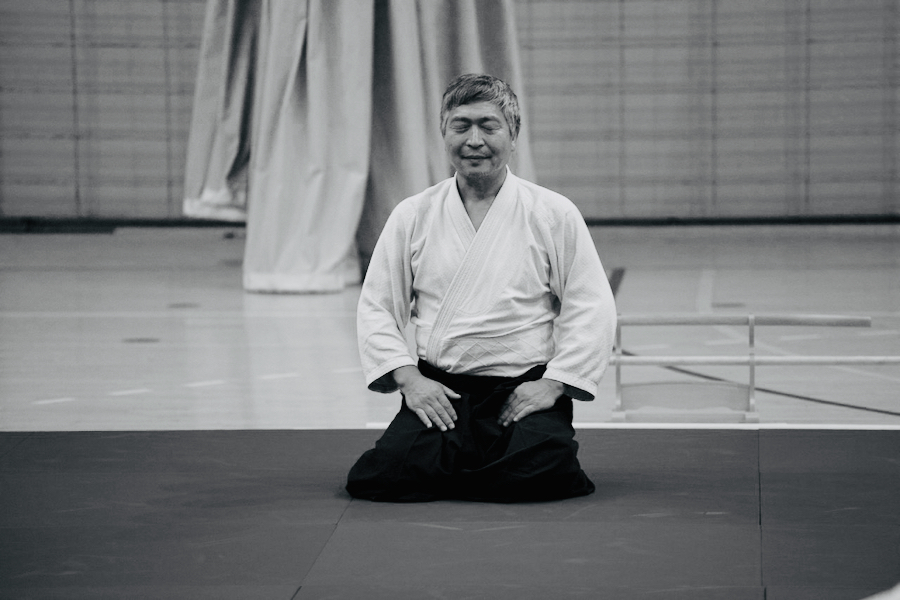
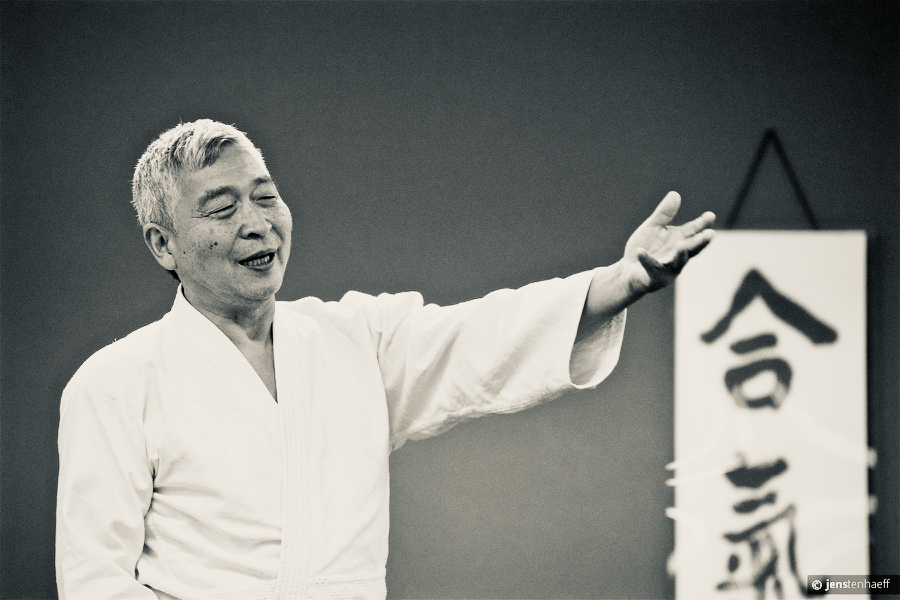
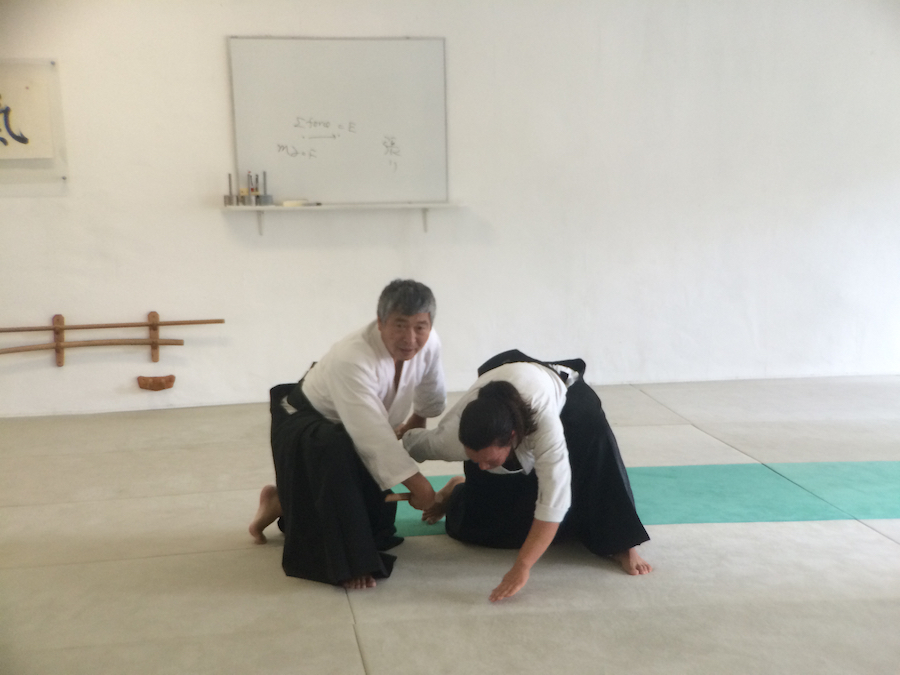

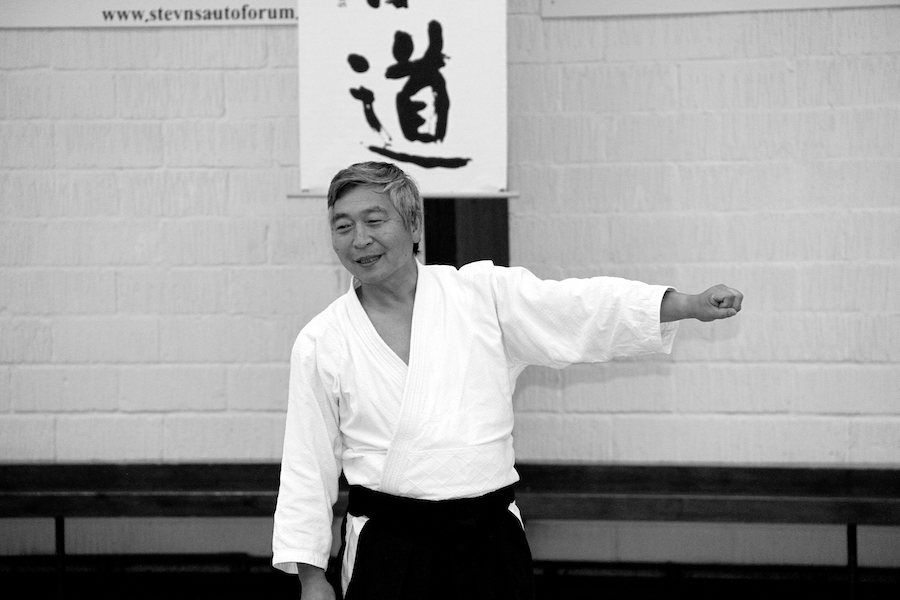
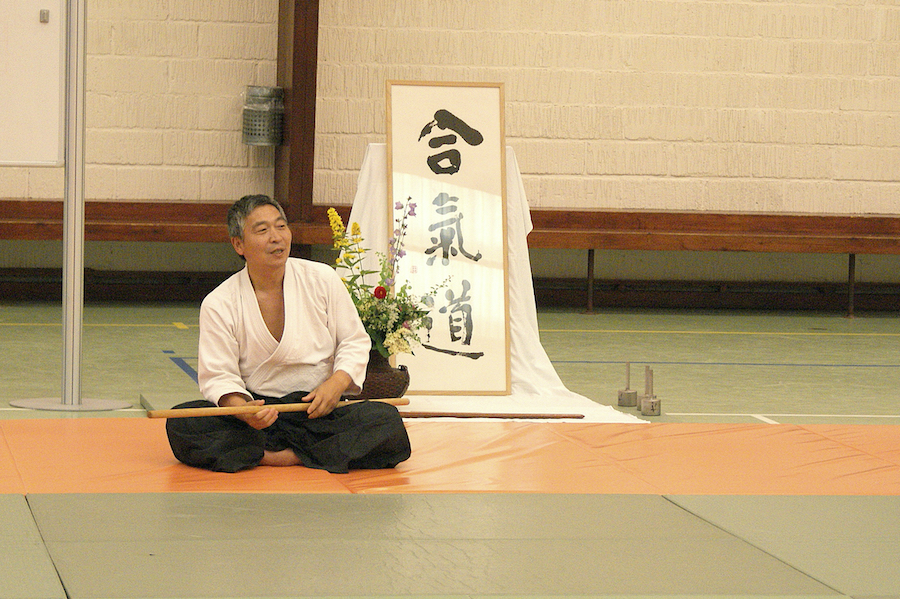
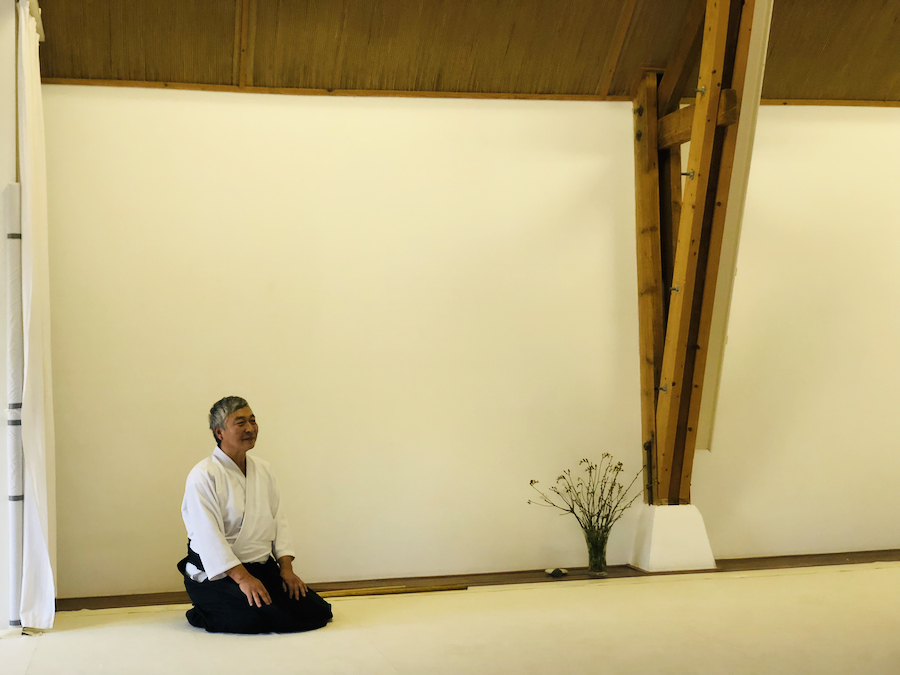
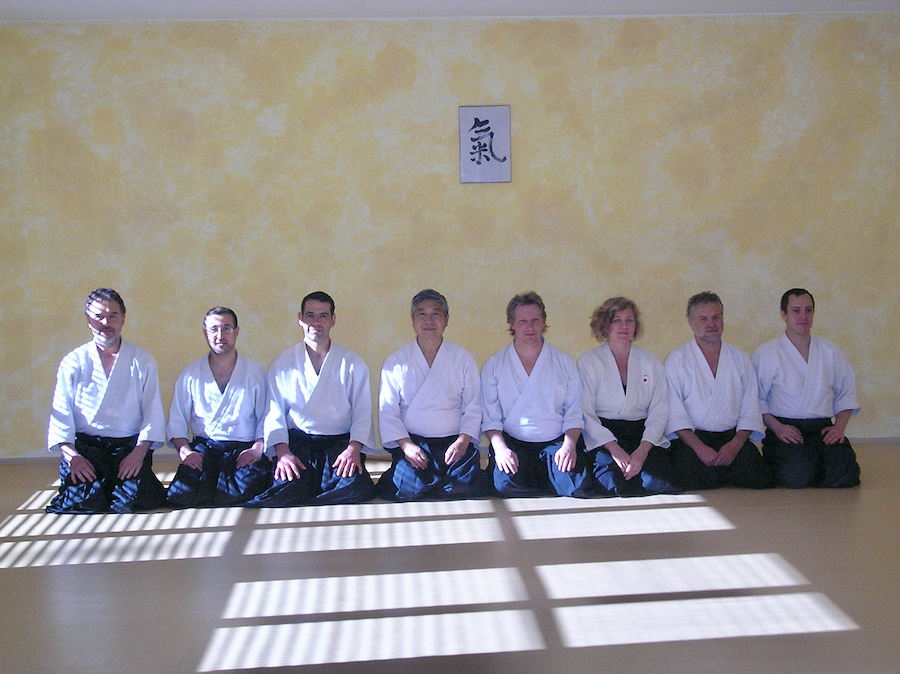
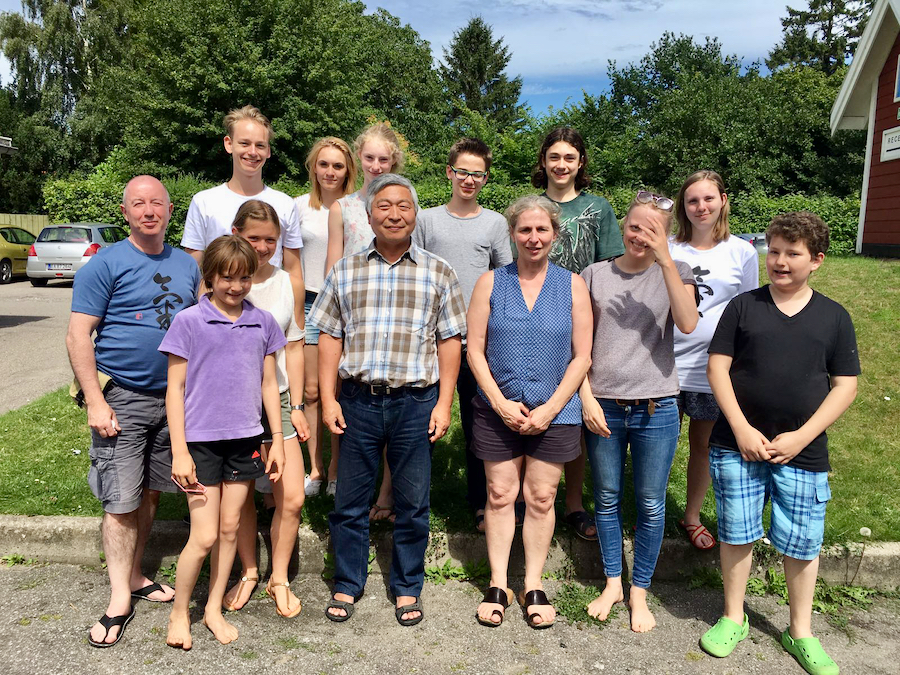
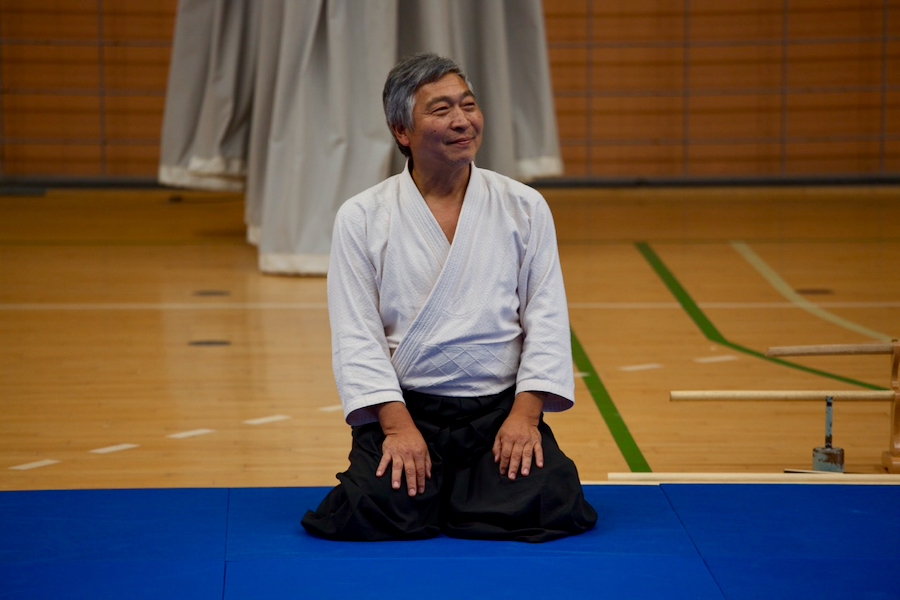
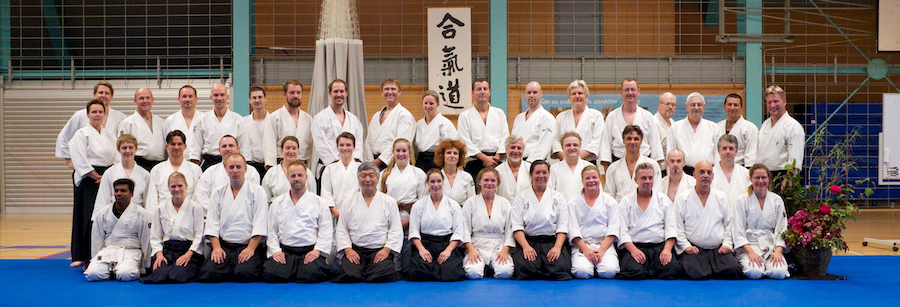
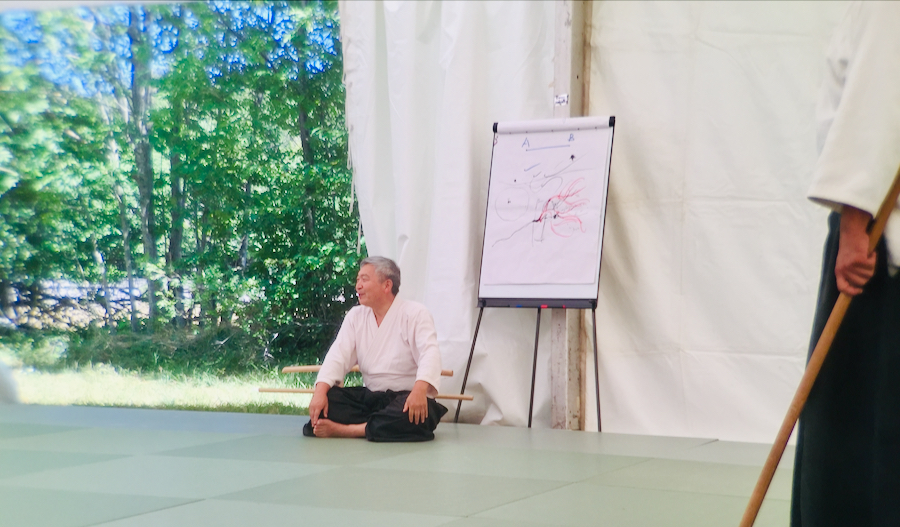
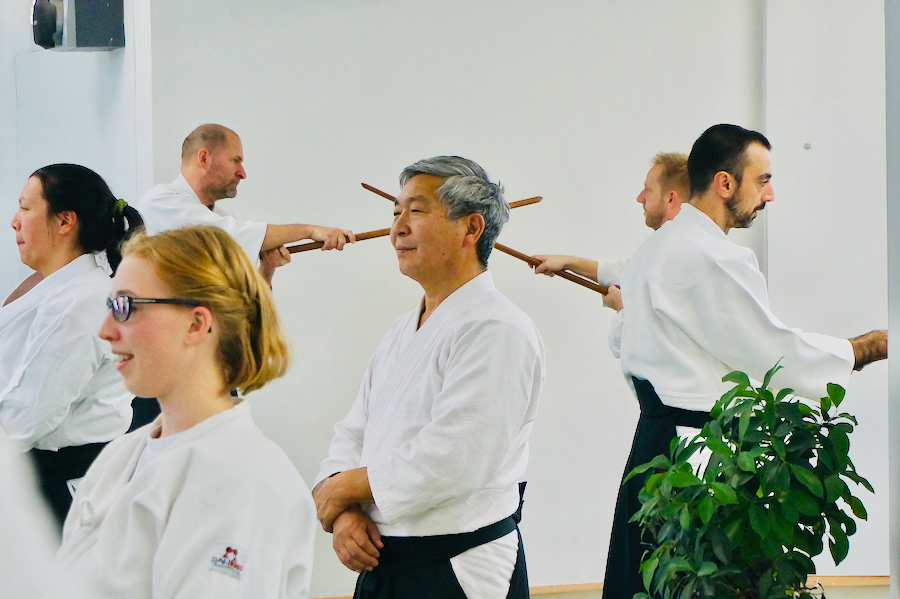
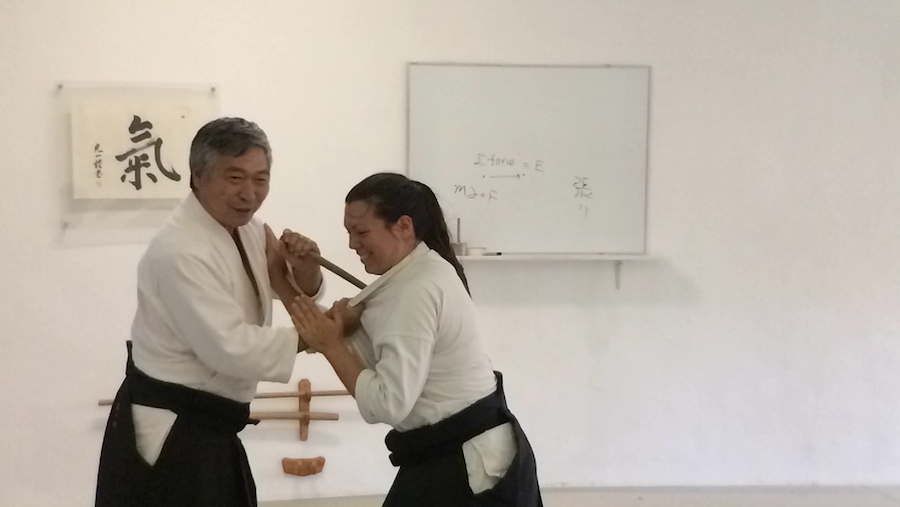
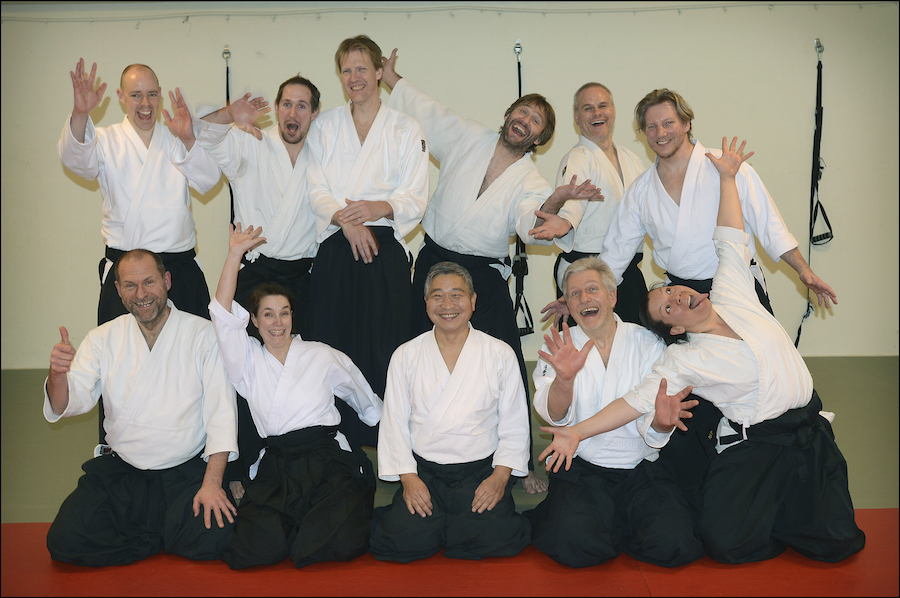
Ki News #6
| Newsletter | 2021|Remembering |
________________________________________________________________
Ki News # 6 - 2021 - Remembering
Ki News is a newsletter for all Aikido students of Ki no Kenkyukai International.
If you want to receive a mail when it is published or if you want to contribute to the Ki News, contact via mail, ki-newsletter@toitsu.dk
________________________________________________________________
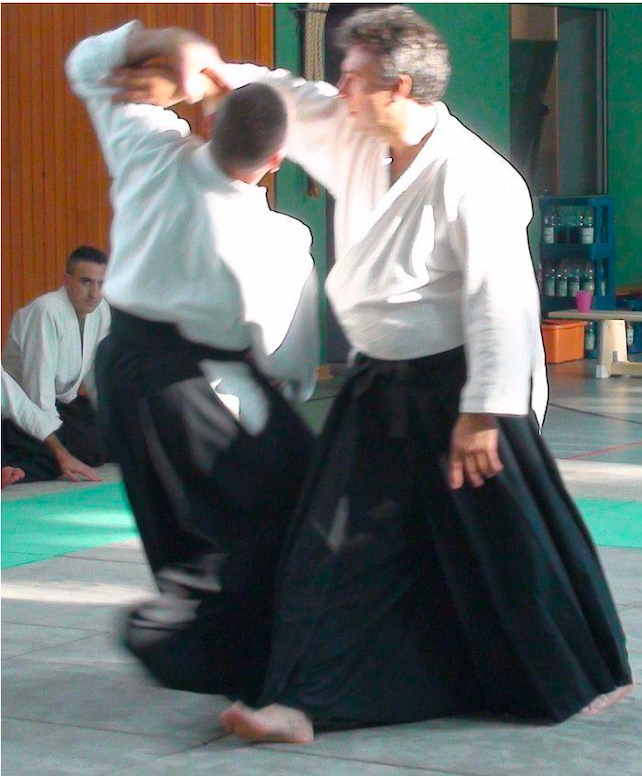
________________________________________________________________
Editors notes
Dear all Aikido people
Gianni Gioconto Sensei and Lennart Gullberg left us all to early.
This issue of Ki News is dedicated to their memory.
Gianni was one of the pioneers of Aikido in Europe and especialy in in Italy.
He started Aikido in 1969!
Gianni said goodbye to us on July 17. 2021.
As you will see of the testmonies below he is loved and missed by so many students and fellow aikido-ka.
Many condolences to his family.
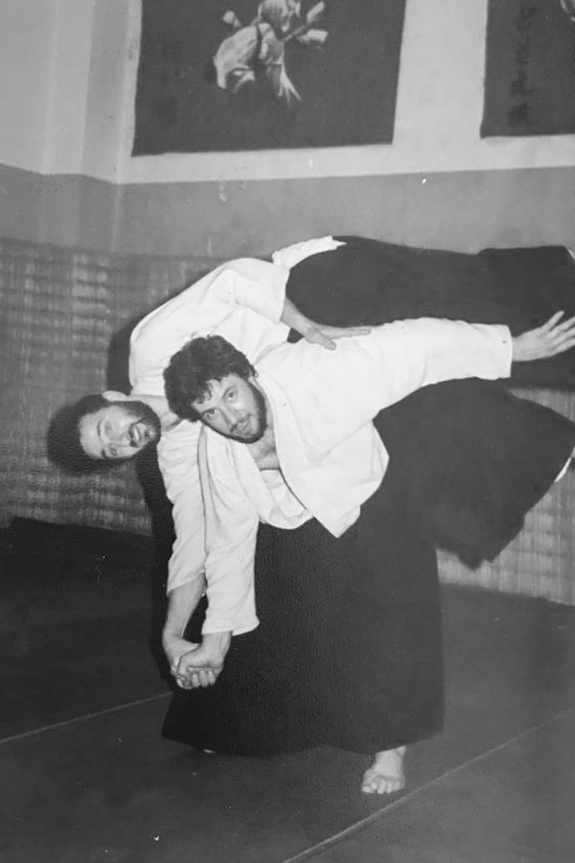
Lennart Gullberg left us August 14. 2021. after longer time illness
He was only 58 years old.
He was a fantastic person and a fantastic Aikidoka - so clear, soft and precise, it was always a pleasure to be on the tatami with him. Always investigating and curious. He could seem very serious, but then one second later he would make you laug. I have always looked up to him and his kind way.
Many thoughts to his family.
____________________________________________
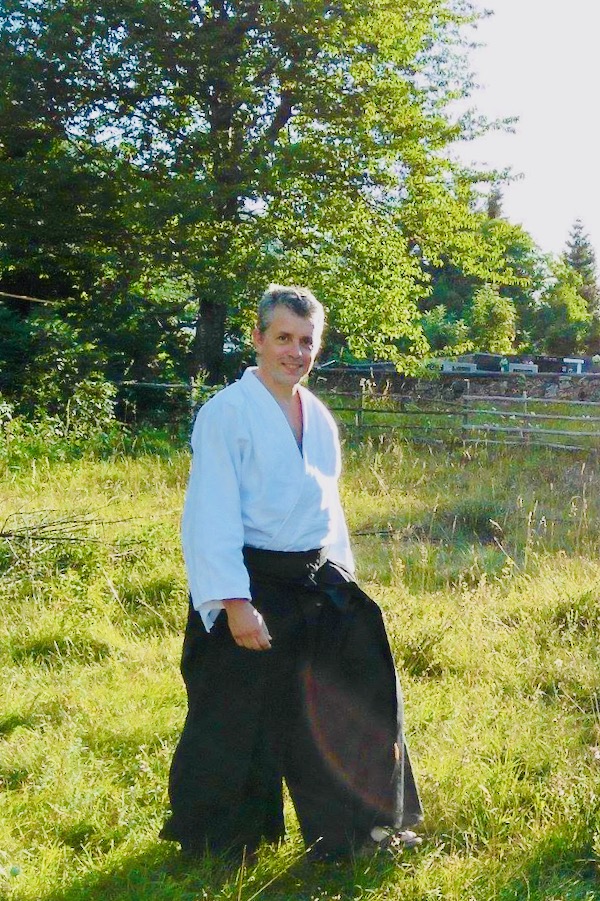
Gianni Gioconto Sensei 10/4 1954 - 17/7 2021
________________________________________________________________
Remembering Gianni Sensei
By Francesco Ingemi
On the evening of July 17, 2021, after an illness that lasted a few months, Gianni Gioconto Sensei passed away from the affection of his loved ones and students.
There are many anecdotes that can be considered and used to write a biographical article on Gianni: all his students, or simply those who have spent convivial occasions with him, will certainly have heard directly from him, many of which obviously related to Aikido.
Gianni began practicing Aikido in September 1969 in the Novara dojo: he was a student of Umberto Tufo, one of the Italian pioneers of Aikido. He began by following the footsteps of his father who had been among the first practitioners in Novara.
The Aikido of those years was not very "refined": discipline masters were rare and, to be able to follow their lessons, one had to wait for them to pass in nearby towns. Often, people had to resort to dedicate most of the lessons to gymnastics and repetition exercises.
Also, at a time when gyms were full of practitioners doing manual work, strength and physicality were needed to "survive" on the mat. Gianni often told how his Master did not know many techniques, but the ones he did know were inexorably effective and you had to be skillful to avoid getting hurt.
Probably thanks to that type of practice Gianni acquired considerable athletic skills and became one of the best uke in circulation (he was also called to take ukemi in judo demonstrations), so much that his teacher entrusted him with a course to teach specifically ukemi to practitioners.
In those years, Hiroshi Tada arrived in Italy to give Aikido a structure, favoring the birth of the Aikikai of Italy. Gianni told how it was Tada Sensei who examined him for the 6th kyu (all subsequent exams up to the black belt he did with Kawamukai Sensei, who had brought aikido to northern Italy in the late 1960s).
Even with a relatively low grade he began to teach Aikido courses in the neighboring villages of Novara; always remembering those years Gianni told of how it was his Master Tufo, who evidently had great hopes in him, to give him his first car with which he could travel to hold those courses.
After a few years his reference teacher in Novara became Roberto Lovati. He was more interested in technical research (for example, the study of weapons) and had more opportunities to attend seminars, even abroad, meeting the Japanese Masters who traveled the world in those years.
From this period, it is possible to find some demonstration videos on youtube: looking at them you can understand a phrase that Gianni often uttered when talking about the old days: “we spent more time in the air than on the ground”, he used to say.
It was Lovati Sensei himself who made the Novara dojo join the Aikido organization of Koichi Tohei, of which he had attended a seminar in the summer of 1978 in Thonon les Bains.
Unfortunately, about a year later Lovati abandoned the practice: Gianni, who in the meantime had reached the degree of shodan, with other instructors continued the work of spreading Aikido, starting to personally follow the operations for the creation of Ki no Kenkyukai Italy, of which Gianni was one of the founders.
In the meantime, the arrival of Yoshigasaki Sensei in Europe and the possibility of following his seminars regularly helped to further increase the level of both technical and understanding of the Ki-Aikido school.
Continues after picture..
In the following decades, Gioconto Sensei played a leading role in the development of Ki-Aikido between Piedmont and Lombardy: proof of this are the many Ki-Aikido dojos still directed today by his students.
Thanks to this ability to be the reference of a large group of practitioners, Yoshigasaki Sensei, upon founding his Aikido Association, recognized him as one of the "Shihan" of his organization.
I 2011 Gianni created the UNIKA association, with the aim of giving an organizational structure to the network of dojos that had identified him as a technical reference.
In 2019 he received from the Doshu the degree of 9th Dan, in the last seminar of Yoshigasaki Sensei organized by his association.
The highest degree conferred by the Doshu went to crown a career of more than 50 years of experience on the mat.
Yet our Shihan was certainly not a practitioner who flaunted experience and degrees, in fact he often said that these high degrees were awarded to ensure that the younger instructors could grow to move forward.
In all these decades of Aikido he has always maintained a vision in some ways very "artisanal" of the practice. He was always involved in organizing even the minor aspects of the activity: we all remember him helping to move or clean the tatamis or loading them and then transported them around in his van, during the preparations for the seminars.
Personally I believe that his attitude to pro-positivity, to common growth, to continuous availability was due not only to a personal character trait, but also to his important experience as a uke in his youth (or perhaps one could also say the opposite ... ). Gianni has never highlighted ukemi as a mere technical or athletic gesture, but rather as an attitude of generosity towards the practice, a way of contributing to making the whole technique harmonious and much more instructive and understandable.
Despite the sudden disappearance of Doshu and his illness, as long as he had the chance, he continued his commitment to the development of Aikido, remaining among his students despite the period of the pandemic.
In the days following his death, there were many messages of condolence from the Italian and international Aikido community, a sign of sincere and lasting affection as well as of profound esteem for what has been achieved in all decades of practice.
One of the phrases that I found several times in the condolence messages was "he was a capable person".
This short sentence describes him very well indeed. He was a person capable of being an example both in practice and in organization. He was a person capable of proposing an extremely personal Aikido, but with a clarity of teaching that has marked the path of hundreds of practitioners.
Above all, he was capable to be a true Master, both on and off the mat.
________________________________________________________________
________________________________________________________________
Since 2008 we have had seminars every year with Gianni Sensei in Berlin.
I have experienced wonderful times with him and I have learned so much from him.
His teaching was inspiring and supportive.
His contact with all of us was so warm-hearted.
Once we had a fantastic evening with Gianni and his dojo disciples in Sigrid’s house when Gianni told us a lot about his life.
This was most impressing, especially as he otherwise kept himself modestly in the background.
With profound gratitude, and in thoughts of his family as well as of his dojo members.
Ulla
________________________________________________________________
________________________________________________________________
Gianni
I always hear his voice immediatly
when I remember him.
So many things I learned from him:
So creativ ways of using technics,
his warm and friendly teaching,
his: don’t fight!
Thank you, Gianni for all!
I'm so sad, that i never more can enjoy his Aikido Do.
I really miss him deeply!
Elisabeth
________________________________________________________________
________________________________________________________________
Dear Gianni,
I miss you and your seminars so much. Each time you braught the sun of Italy to Berlin.
Besides the deep sadness in our hearts your laughter will shine on. You opened every heart for contact, the love for Aikido and enjoying life.
You helped me doing my first dan, you gave me the feeling I can do it, you challenged me as far as I could go. I am so thankful.
You combined deep knowledge of Aikido with empathy for your pupils and the love of life.
That is real Aikido and that means to be a true teacher and sensei.
Eva from Berlin, Dojo of Ulla
________________________________________________________________
________________________________________________________________
Grazie Gianni.
For your profound teachings, kind and generous,
and your voice and your smile encouraging us
to become our own masters.
Deeply missing you.
Your "rappresentanza à Bonn"
Irene
________________________________________________________________
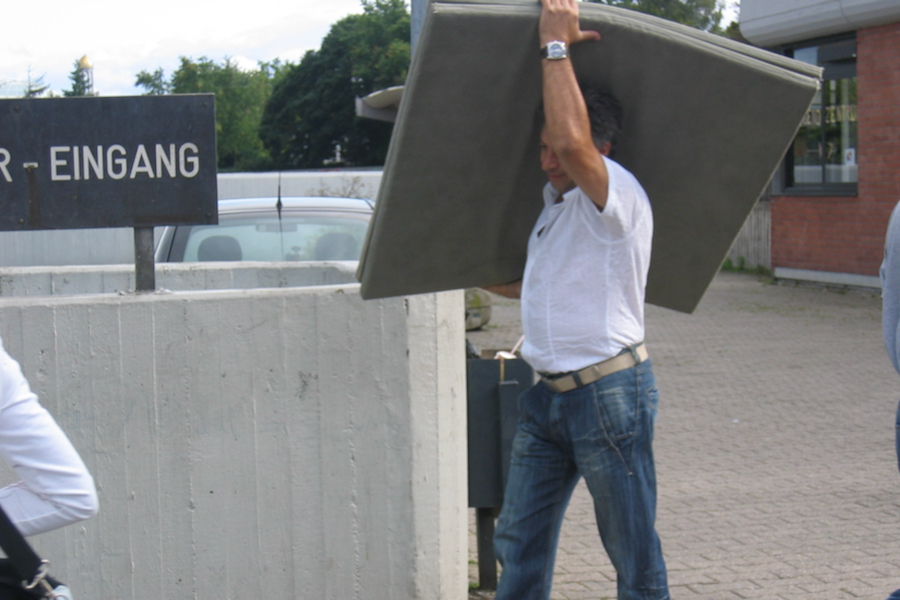
________________________________________________________________
In remembrance of Gianni
I was very sad to hear of Gianni passing away. His seminars in Berlin were always inspiring and we laughed a lot no matter of the language difficulties.
I also remember a moment when I had a bad day in the Aikido class thinking of Beppe, who had just passed away and Gianni asked me, why I was looking so glooomy. I told him why and he became quiet for a moment.
Thinking of Gianni, and also of Doshu and Beppe, I´d like to recite Rumi, the Persian poet, Sufi mystic and scholar:
“Goodbyes are only for those who love with their eyes. Because for those who love with heart and soul there is no such thing as separation.”
We will miss you, Gianni!
Nicole
________________________________________________________________
________________________________________________________________
He had so much Ki and cheerfulness, and this was completly natural.
I’m so happy that I decided to go to the seminar with him in Berlin in February 2020, shortly before the Corona-Lockdowns.
It was such a wonderful seminar, like all seminars with him.
And I’m so sad.
Anke
________________________________________________________________
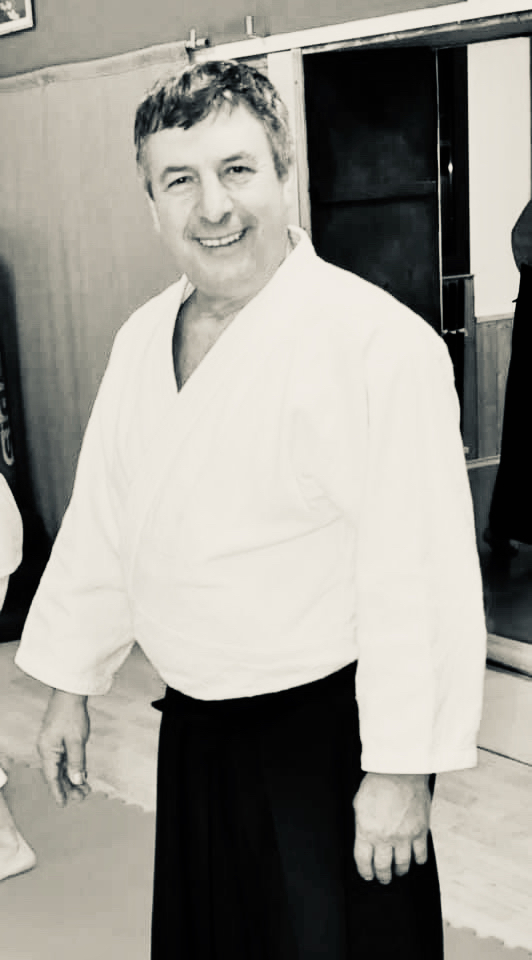
________________________________________________________________
About twenty years ago, Gianni went (with Rocco) to Herzogenhorn for a seminar with Yoshigasaki Sensei. I was also there, in the "Zellerhütte".
Gianni and Rocco arrived in the middle of the night, all doors closed and they slept in their car! In the morning, with small eyes, Gianni still smiled and laughed, as he knew how to do so well. I think
I have hardly ever seen it other than with a smile on his face, or even a gigantic and contagious laugh.
A few years later (it must have been in 2004, I think), still in Herzogenhorn, I had brought my telescope to observe the planet Mars, which was as close as possible to the Earth at that time, and Gianni could hardly give way to the ocular to others, always with his smile! It was beautiful and good.
Now Gianni practices laughter and smiles in another sphere of the universe. Did he meet our Doshu? I certainly do not know, but I can imagine it easily. Great spirits meet, it is said, and it is true, here or elsewhere, I have no doubt. I burned a lot of candles for you Gianni and I think you noticed them.
Ciao amico, a presto, così o alteramente.
Ivo lou Nissart / Yves
________________________________________________________________
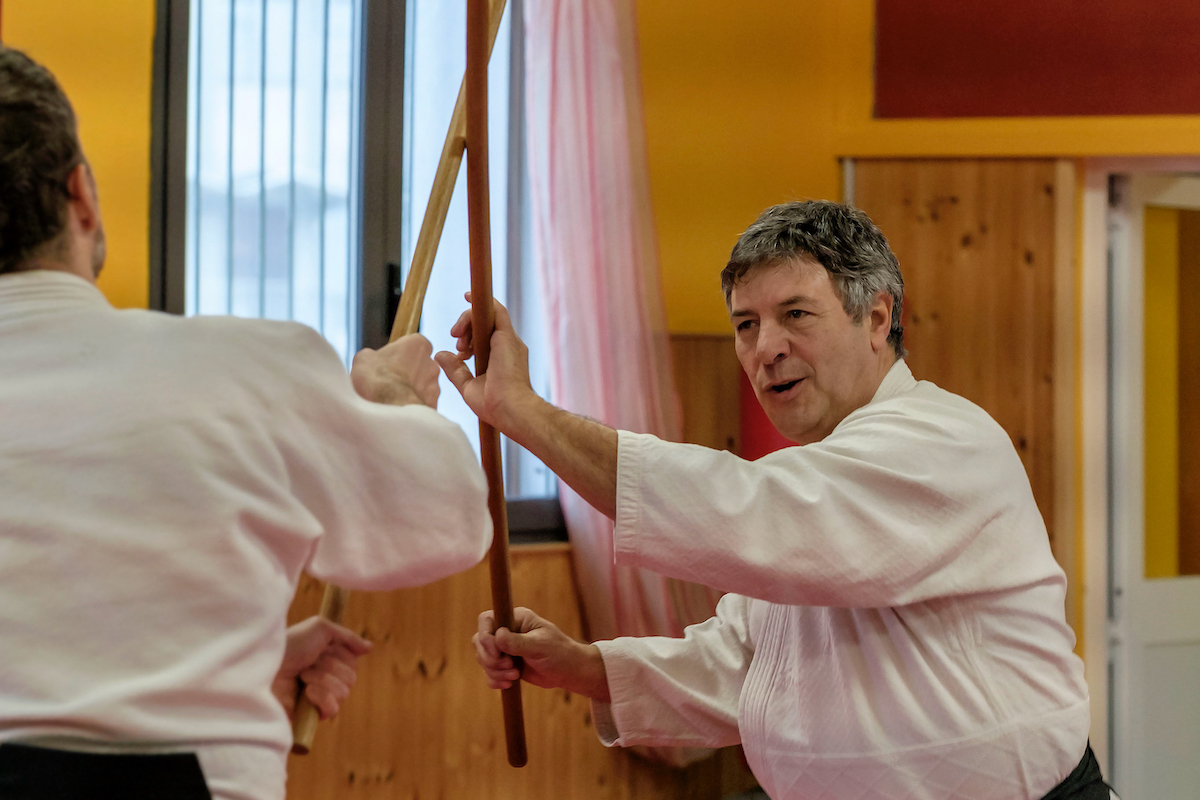
________________________________________________________________
The bright side
By Corrado Calossi
Tehodoki Aikido Bologna
The Interview was original published in Italian December 2020.
Link to the article at Ki No Nagare site
Smiling, creative and free. Able to create from the first glance a relaxed and pleasant atmosphere with his interlocutor. To put it simply, a true Aikido Master. Gianni Gioconto Shihan, who spent more than fifty years of his life on the tatami, agreed to answer our questions on four specific topics.
Before we even start we wanted to express our personal appreciation for him and our gratitude for his availability.
Thanks to Francesco Ingemi for his advice and the pictures we used in this article.
UKEMI
Beppe used to say that Sensei Yoshigasaki always talked about you as the “better ukemi” and watching some old videos published online by master Maule about your Aikikai time, your great athletic ability was undeniable but I doubt that Sensei was talking just about that. Then my question is: Did you find any differences in the approach of Ukemi by Sensei Tohei and Sensei Yoshigasaki when you joined Ki No Kenkyukai ? And furthermore what are, in your competent opinion, the qualities of good Ukemi?
To do Ukemi of course a good athletic foundation is mandatory, but it’s not the element that makes the real difference. The attitude to improve it’s pivotal, it’s required a sort of generosity toward the practice in it’s whole, which means that it’s not important to show one’s own skills as Uke, but what’s most important is the chance to develop the art that we are practicing. It’s necessary some commitment to highlight and value the interaction with Nage, beyond our own personal performance.
When we succeed in giving less evidence to ourselves in order to leave room for the expression of the beauty of the “whole”, well that’s when we’re doing a good Ukemi for sure.
Then there was a significant passage that I’ve experienced moving from Aikikai to Ki No Kenkyukai. Practicing with Sensei Tohei and with Sensei Yoshigasaki, I realized that what I did was not enough and even though I was already considered a good Uke, in a way I had to start learning over again. I had to work hard to become a “real” Uke. I mean “real” in the sense of “true”, which means not just a Uke who could be thrown at command. Sensei Tohei before and especially Sensei Tohei after, using practical examples, worked a lot on this topic.
Often, the risk of doing Ukemi is to transform the practice into a sort of theatrical performance where the attacker has a detailed script for her role which she tries to represent at her best, but there’s nothing more than that. So we don’t grow but instead we stay caged in a pre-established form. The art cannot develop itself. Then time goes by, and little by little the needed physical ability is lost and in the end, very often, we stop practicing.
Continues after picture..
You see, in Ki Aikido there are a lot of people with more or less fifty years of practice on their back. As far as I know this isn’t happening in other schools. When you see someone with thirty years of practice, you’re looking at an exception who maybe is already a big master. On the other side inside Ki Aikido is quite easy to find people with that kind of experience. That’s why our degrees have become so high. Something this frequency in high dan degrees has been criticized but after all, with all these years of practice I find it quite normal that Sensei assigns them.
Coming back to the beginning of your question, I think that the athletic dimension is without any doubt secondary respect to the one of “reality”. This is a lesson that I’ve learned in the Ki No Kenkyukai.
Surely you had the chance to see Sensei Yoshigasaki doing Ukemi…
Many times! When Sensei Tohei had to show “officially” a Tsuzukiwaza the chosen Uke was always Sensei Yoshigasaki. He was one of a kind, a true, straightforward, no frills Ukemi. There was nothing more than what was needed to correctly express the moment of the technique. Without any doubt a proper Uke. I’ve learned a lot watching him.
BUKI – WAZA
As years went by, you, like other Shihans, dedicated to the creation of alternative forms with weapons, compared to those canonized inside the Tsuzukiwaza. That’s a creative process that requires experience and some sort of courage, which I personally envy a lot. How did you develop your forms? (for example, did you just take inspiration by Ki Aikido kata or there’s some more?) And what’s the purpose for them?
Honestly I didn’t take inspiration from the existing Tsuzukiwaza, even though the movements with weapons are the same: Yokomenuchi, Shomenuchi, Tsuki… so it’s obvious that those will remain. The initial purpose was to make it easier to understand the foundational movements. For example let’s examine Tsuki. Training just Tsuki, without any propaedeutic exercise, I realized that most of my students were just swinging the Jo in the air, without a real understanding or depth in the movement. The movement was there, but a clear purpose was absent (without Ki, we could say Ed.). Little by little I started to identify exercises which could be useful to develop the depth of the act. I gathered those exercises together in a harmonious way and so some Tsuzukiwaza with weapons were born.
This sequence, before having any Tsukiwaza dignity, usually underwent several trials and tests. When my students accepted them not as an enforcement but as something useful, then it was perfect.
For example, I made a Tsuzukiwaza with Jo that was born by itself. I started putting together all the movements with the Jo: Yokomenuchi, Shomenuchi, Tsuki, Ushiro-Tsuki, the upward attack and the circular cut. I ordered them in a logic sequence of 12 techniques which allowed to quickly practice all the fundamental movements. I added to the sequence the chance to deal with more Ukemi and so was born a Tsuzukiwaza with four or eight partners. I didn’t start with the specific intention to create something like that, it came by itself.
Sensei Yoshigasaki never came to inhibit such initiatives so I can say that they are not harmful and that I can continue this way.
Continues after picture..
I’ll take the chance to ask you something I always wondered about, in Ki Aikido we study Jo with Jo, but those are movements derived or linked to the movements of Bo, while in the Aikikai they practice Kumi-Jo forms where weapons move both in the logic of the short staff. Why in Ki Aikido we don’t have any sequence of that kind?
Staff versus staff is a kind of practice that in Japan never had real dignity as a martial art, it was always considered like a child play or anyway a kind of fighting not suitable for a Samurai. So it was not very developed. Sensei Saito used the staff a lot, but more like Suburi or like Kumi Jo than like Tsuzukiwaza. The practice consists in repetition of the individual exercises or in the practice of forms with a partner separated the one from the other, so it was not a sequence based on a logic of changing or passing from a situation to another like ours Tsuzukiwaza.
One element I’ve always been fascinated by in Saito school are those techniques where Nage uses Jo to throw the other, in very different way than our Jo Nage where the Jo is grabbed by Ukemi, but instead he uses it for example putting it inside the elbow of Uke to lead him… that’s another practice I’ve never seen in Ki Aikido.
Before we moved to Ki No Kenkyukai, both me and other older Shihan, we all practiced those kinds of forms and personally sometimes I still use them. Clearly it’s more like playing than a real practice. But sometimes, if they’re used with wisdom and intelligence, they are didactically useful to deliver some information. Obviously in order to put them into a lesson it’s required some knowledge and personal experience.
AIKIDO IN REAL LIFE
You’re not just an Aikido Master, but also an entrepreneur and, as years went by, you managed, with great sacrifice I guess, to successfully carry on both. Sensei Tohei spoke about Ki in Daily Life and Sensei Yoshigasaki spoke about Aikido in Real Life. What did the practice give to you in your work life outside of the tatami?
I would say that there was a fair exchange between one activity to the other. Each one of them gave me something to do better in the other one. For example, I think that in time, Aikido practice improved my ability to communicate and to relate with customers. On the other hand I think that approaching the teaching of a martial art “as an entrepreneur” gives a very useful serenity. You know what it means to manage an organization, having a project to develop and communicating it, supporting the people around you. And then creating a long lasting relationship between the Dojos of your group, based on mutual respect. All these elements are something that an entrepreneur has to learn.
Ki Aikido teaches something equally important for an entrepreneur, which is that you cannot always win. So, it’s necessary to prepare the best we can even for the more unfortunate circumstances. In other words, you have to create the condition inside yourself to say “Ok, I’ll do everything that I can”. After all, things change constantly and quickly, as we saw during this year!
THE FUTURE
The Pandemic and the sanitary emergency, regardless of the light we’re starting to see at the end of the tunnel, represented a turning point for many things. How do you see the future of Ki Aikido, after COVID?
I think that we will need to come back to the roots, which are the lessons in presence. Every opportunity we were given by technology are for sure excellent palliatives, useful to stimulate and keep alive the interest but they cannot substitute the lessons in presence.
They were useful to keep relationships and I think it’s positive that the instructors stay connected with these tools to develop initiatives and to start their work looking after the re-openings.
As far as I’m concerned, together with Maurizio Volpe, we’re planning some open air lessons for the beginning of new year. At the beginning of the emergency I was afraid of a bigger loss of interest, but what I see and listen from many groups is the opposite. We just have to be patient and see what’s going to happen when we will be able to start again, I’m Hopeful!
________________________________________________________________
Lennart Gullberg
Lennart Gullberg 13/6 1963 - 14/8 2021
________________________________________________________________
Lennart Gullberg left us August 14. 2021. after longer time illness
He was only 58 years old.
Lennart started aikido in 1987, and became known for his mild being, but also for his precise and high techniqual level.
His mind was always sharp and it was kind of joke that Sensei could always ask Lennart the order of a Taigi / Tsuzukiwaza.
He was a fantastic person and a fantastic Aikidoka - so clear, soft and precise, it was always a pleasure to be on the tatami with him. Always investigating and curious. He could seem very serious, but then one second later he would make you laug. I have always looked up to him and his kind way.
Many thoughts to his family.
____________________________________________
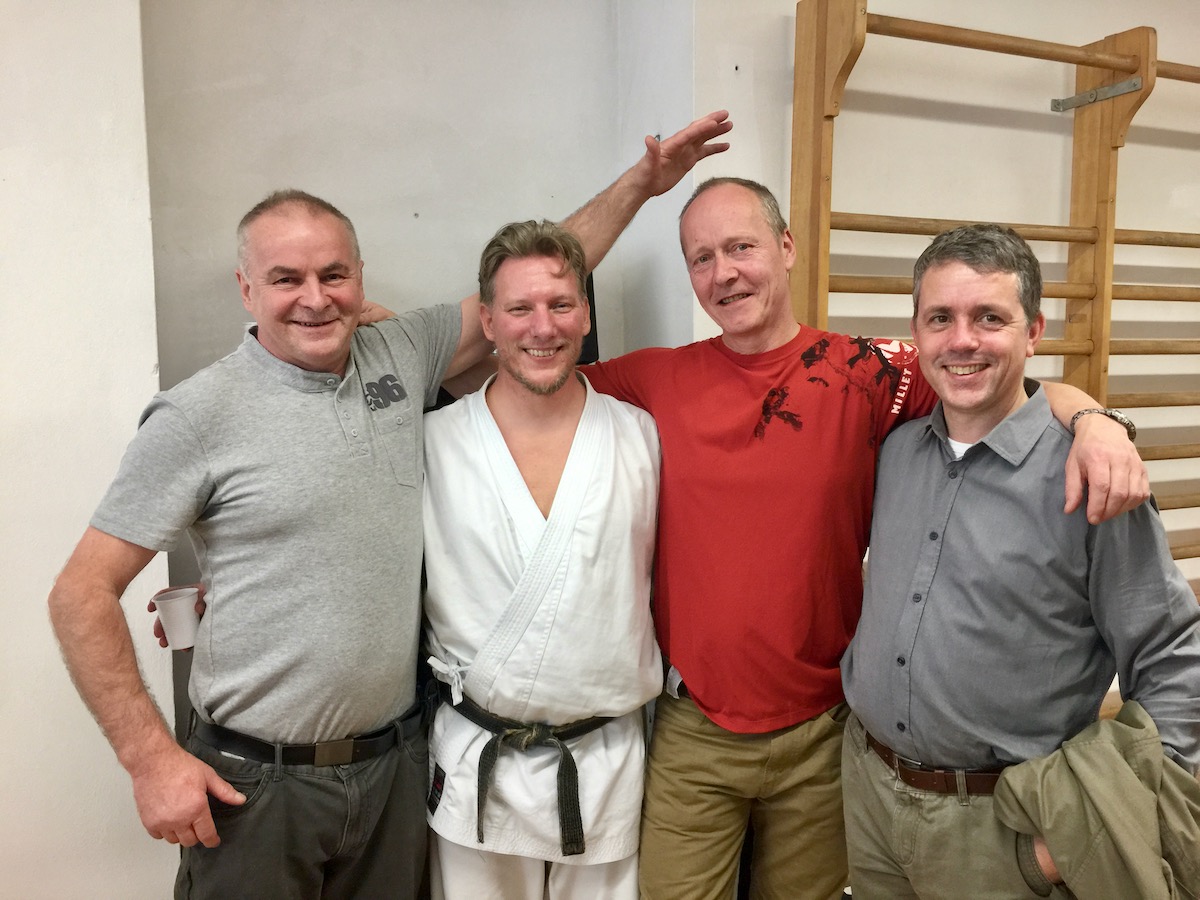
________________________________________________________________
We are deeply saddened by the news of Lennart's passing and we remember the good times we shared with him.
Katja and Christian from Nuremberg
_______________________________________________________________
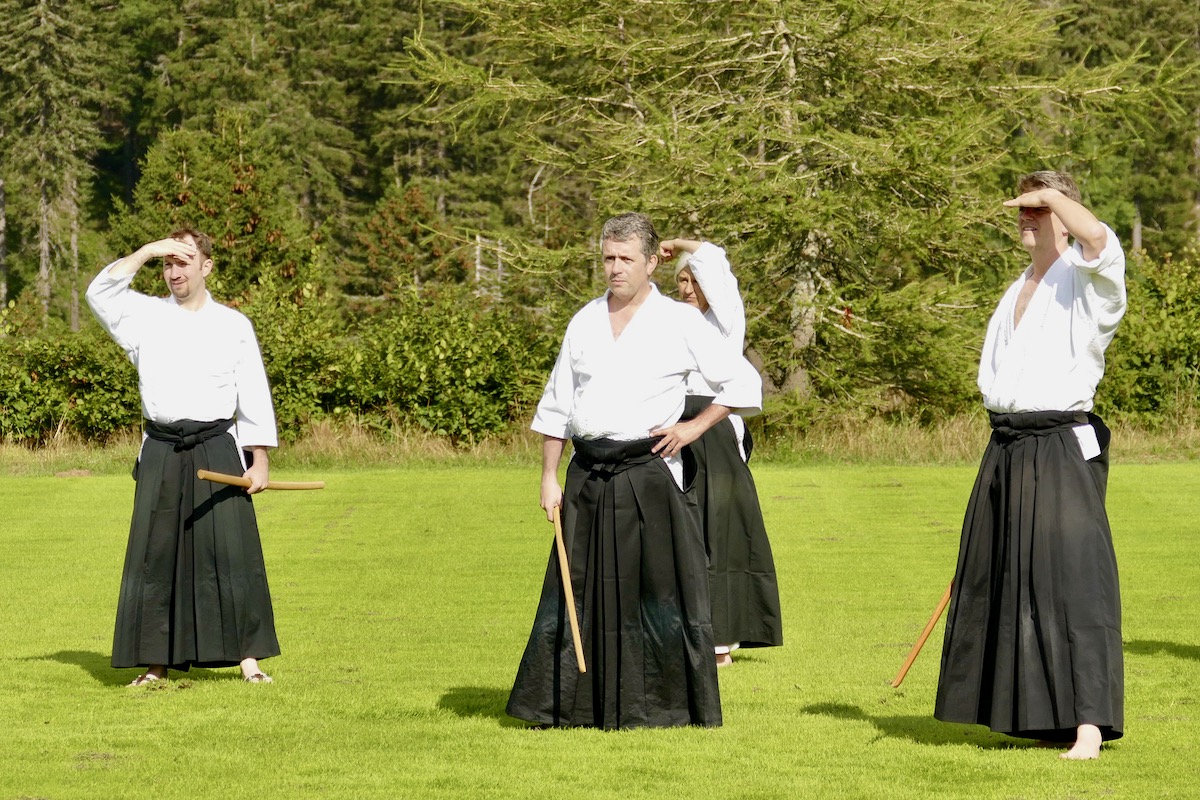
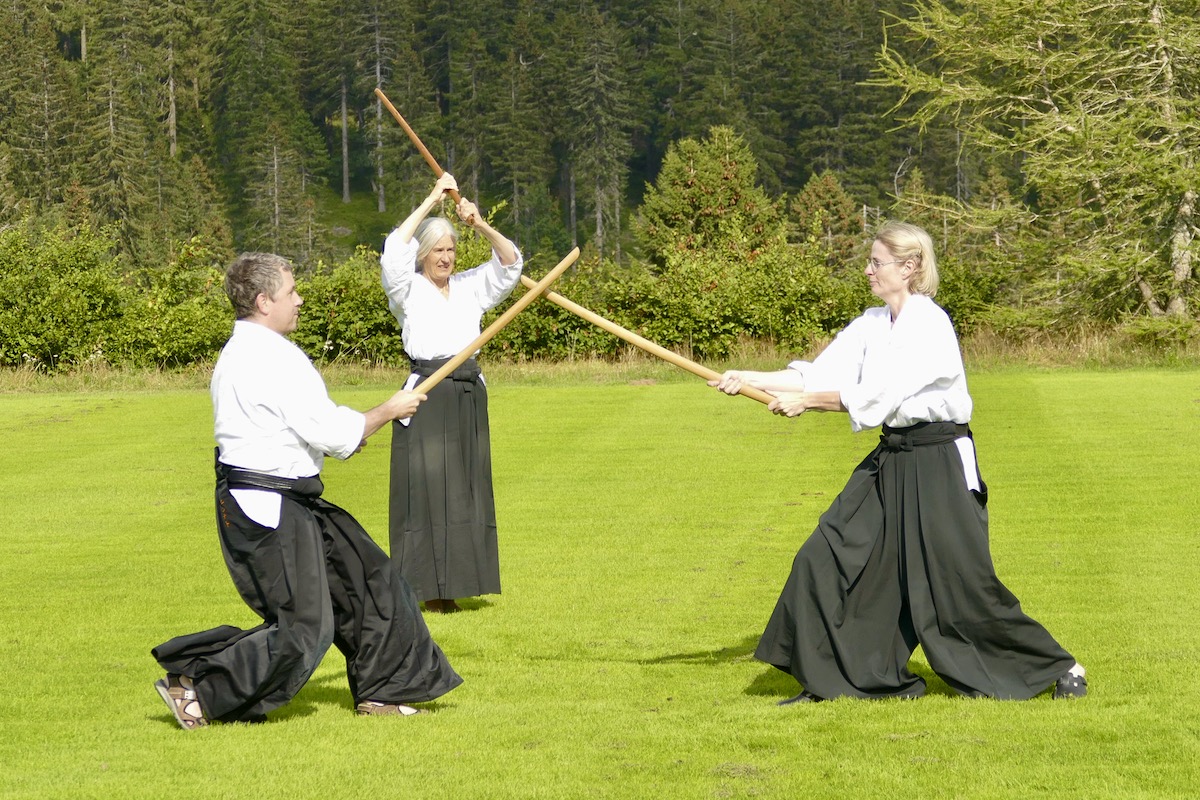
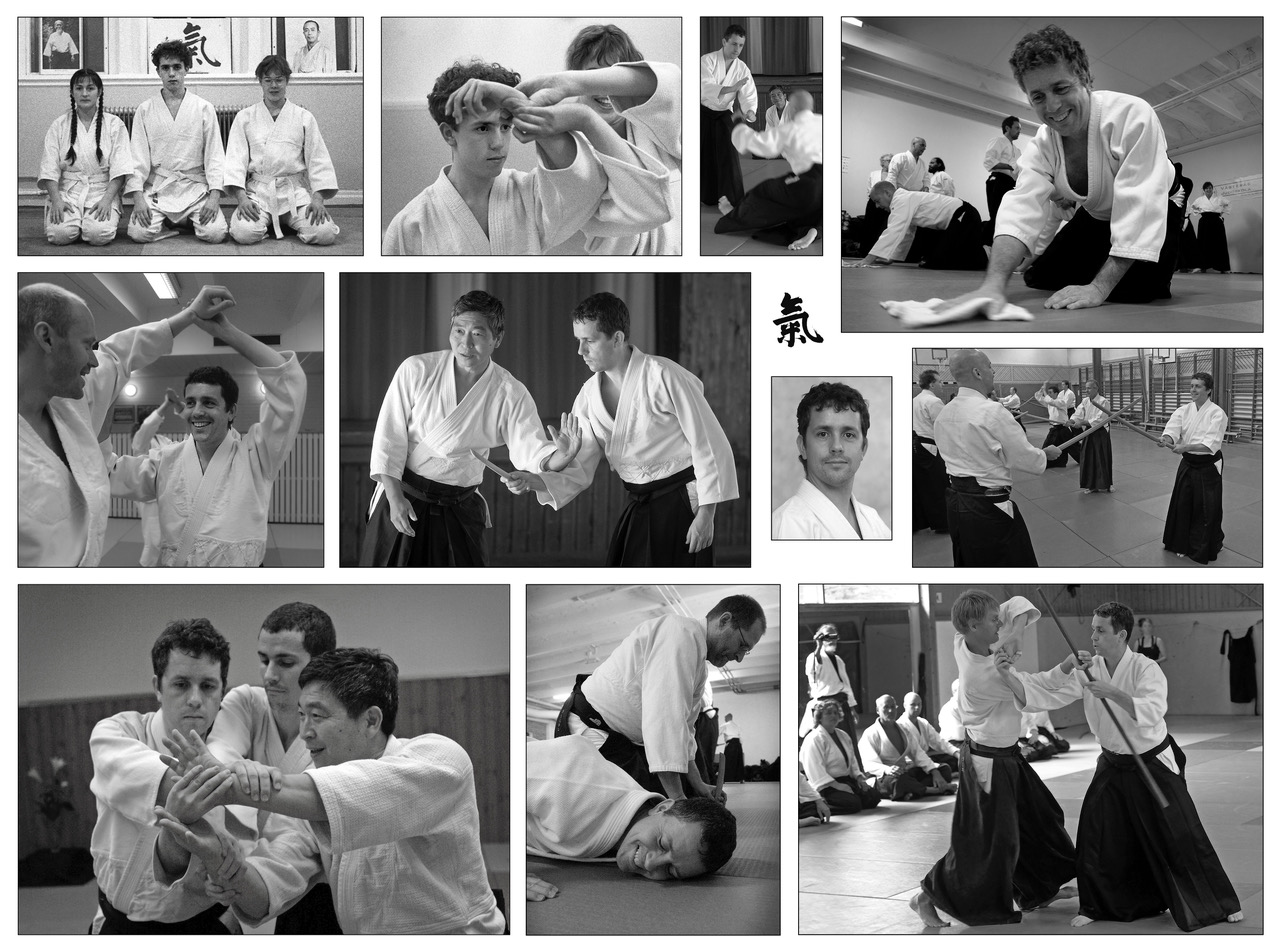
Memories
________________________________________________________________

